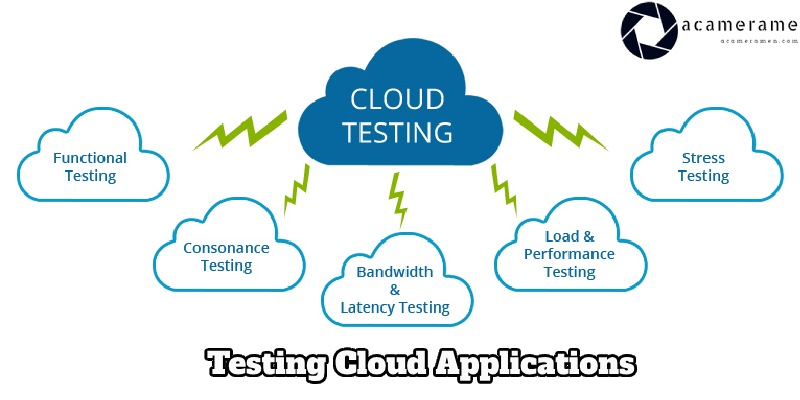Distance Converter
Testing cloud applications has become a popular trend for organizations and businesses. In this article, we will further explore the importance and challenges of performing these testing activities.
What is a testing cloud application?
Testing cloud applications refers to the process of evaluating and validating software applications that are deployed on cloud computing platforms. Cloud applications are those that utilize cloud infrastructure and services for their operation, storage, and data processing. Testing these applications involves verifying their functionality, performance, security, and reliability within the cloud environment.

Cloud applications can vary widely in complexity and architecture, ranging from simple web applications hosted on cloud servers to complex distributed systems leveraging various cloud services such as infrastructure as a service (IaaS), platform as a service (PaaS), and software as a service (SaaS).
Testing cloud applications involves traditional software testing practices adapted to the cloud environment, as well as specific considerations related to cloud infrastructure and services. This may include automated testing, performance testing under variable workloads, security testing to identify vulnerabilities in cloud configurations, and compatibility testing across different cloud platforms and devices.
Overall, testing cloud applications is essential to ensure that they meet quality standards, perform effectively in the cloud environment, and deliver a seamless user experience to customers.
The importance of testing cloud applications
Testing cloud applications is of paramount importance due to several key reasons:
Reliability and Performance
Cloud applications are accessed remotely over the internet, often by a large number of users concurrently. Testing ensures that the application performs reliably under various load conditions and provides a consistent user experience, thereby maintaining customer satisfaction and trust.
Scalability
Cloud platforms offer scalability features that allow applications to dynamically adjust resources based on demand. Testing verifies that the application can scale effectively, ensuring that it remains responsive and available even during periods of high traffic or resource demands.

Security
Cloud environments introduce unique security challenges, including data breaches, unauthorized access, and compliance requirements. Testing helps identify vulnerabilities and ensures that appropriate security measures are in place to protect sensitive data and maintain regulatory compliance.
Cost Optimization
Testing helps identify inefficiencies and performance bottlenecks in cloud applications, enabling organizations to optimize resource utilization and minimize operational costs. By identifying and addressing issues early in the development lifecycle, organizations can avoid costly downtime and performance degradation in production environments.
Cross-Platform Compatibility
Cloud applications may need to run across different cloud providers or environments. Testing ensures compatibility across various platforms, devices, and operating systems, allowing organizations to reach a broader audience and maximize market penetration.
Continuous Improvement
Testing is not a one-time activity but an ongoing process that supports continuous improvement and innovation. By collecting and analyzing feedback from testing activities, organizations can identify areas for enhancement, prioritize development efforts, and deliver new features and updates more effectively.
Challenges in testing cloud applications
Testing cloud applications presents several unique challenges due to the nature of cloud computing environments. Some of the key challenges include:
Complexity of Cloud Infrastructure
Cloud environments are inherently complex, comprising various components such as virtual machines, containers, microservices, and cloud services. Testing across this diverse infrastructure requires specialized knowledge and tools to ensure comprehensive coverage.

Dynamic and Scalable Nature
Cloud applications can dynamically scale resources up or down based on demand, which introduces challenges in performance testing. Testing under variable workloads and ensuring that the application scales effectively without compromising performance or reliability is essential.
Data Security and Privacy
Cloud environments raise concerns about data security and privacy due to the shared nature of infrastructure and potential exposure to security breaches. Testing must include rigorous security assessments to identify vulnerabilities and ensure compliance with data protection regulations.
Integration and Interoperability
Cloud applications often rely on integration with various cloud services, third-party APIs, and legacy systems. Testing the integration points and ensuring interoperability across different components and environments is critical to avoid compatibility issues and data inconsistencies.
Network Latency and Reliability
Cloud applications are accessed over the internet, making them susceptible to network latency, packet loss, and downtime. Testing under real-world network conditions and simulating network failures helps assess the application’s resilience and responsiveness.
Vendor Lock-in
Organizations may face challenges related to vendor lock-in when using proprietary cloud services or platforms. Testing should consider the portability of applications across different cloud providers and evaluate the impact of vendor-specific features on performance and functionality.
Continuous Deployment and DevOps Practices
Cloud applications often follow DevOps practices, emphasizing continuous integration, delivery, and deployment. Testing must align with these agile methodologies, incorporating automated testing, continuous monitoring, and feedback loops to ensure rapid and reliable delivery of updates.
Cost Management
Cloud resources incur costs based on usage, making cost management an important consideration for testing activities. Organizations need to optimize resource utilization, minimize unnecessary spending, and accurately forecast testing expenses to avoid budget overruns.

In conclusion
Testing cloud applications is becoming more important and more complex than ever. For organizations and businesses, ensuring that their applications operate reliably, securely and efficiently in cloud environments is key to achieving success and competitiveness in the cloud environment. school today.